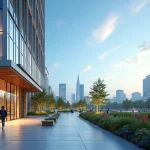When planning a home extension, loft conversion, or new build in Southwark, understanding the local planning permission process is crucial. Southwark, one of London’s most dynamic boroughs, has its own planning policies, conservation areas, and design expectations. Partnering with an experienced architectural practice such as Planning Design London can make all the difference between a smooth approval and a frustrating delay.
In this article, we’ll break down the essentials of planning permission in Southwark, what documents you’ll need, and how professional guidance ensures your project’s success.
Also to read : Effortless hard floor cleaning in surrey: shine and protect
Understanding Planning Permission in Southwark
Planning permission is the formal approval required from Southwark Council before you begin most building projects. It ensures that your proposed development aligns with local planning policies, environmental considerations, and the character of the area.
In Southwark, this process is especially important due to the borough’s mix of historic districts like Dulwich and Bermondsey, alongside rapidly developing modern zones such as Elephant & Castle. Each area comes with its own set of planning rules and design sensitivities.
Also to see : Revive your bathtub: expert reglazing services in toronto
Minor works, such as small internal alterations, may not need permission and can fall under permitted development rights. However, larger changes — like extensions, change of use, or developments in conservation areas — usually require a formal application.
The Planning Process Explained
The typical planning process in Southwark involves several stages:
Pre-application advice – Before submitting a full application, it’s often useful to seek feedback from Southwark Council. This helps identify potential issues early.
Preparation of drawings and documents – You’ll need accurate architectural plans, a site location map, and possibly design statements or heritage reports.
Submission and validation – Once submitted, the council will check that your application meets all requirements before public consultation begins.
Consultation and assessment – Neighbours and local bodies can comment on the proposal. The planning officer will then assess it based on local and national planning policies.
Decision – A decision notice is issued, granting permission, granting with conditions, or refusing the application.
A well-prepared application with clear, professional plans can significantly improve your chances of success.
Why Professional Drawings Matter
High-quality plans are at the heart of every successful planning application. They communicate your design intent, ensure compliance with regulations, and allow planning officers to assess your proposal accurately.
That’s why many homeowners and developers turn to specialists for Drawings for Planning Permission in Southwark. These drawings must reflect not only the technical aspects of the build but also respond to the borough’s architectural character.
Whether you’re extending a Victorian terrace in Peckham or designing a modern infill home in Camberwell, precise and context-sensitive drawings help your project move forward smoothly. At Planning Design London, the team ensures each plan aligns with both the homeowner’s vision and Southwark’s planning requirements.
How Planning Design London Can Help
Navigating the planning system can be challenging, especially in an area as diverse as Southwark. Planning Design London combines architectural expertise with a deep understanding of local policies to streamline the process for you.
Their services typically include:
- Feasibility studies and pre-application advice
- Site surveys and measured drawings
- Full sets of planning drawings and supporting documents
- Liaison with Southwark Council throughout the process
- Adjustments and resubmissions if needed
With years of experience in residential and commercial projects, their team ensures that every detail — from layout to material choice — complies with planning standards while achieving your design goals.











